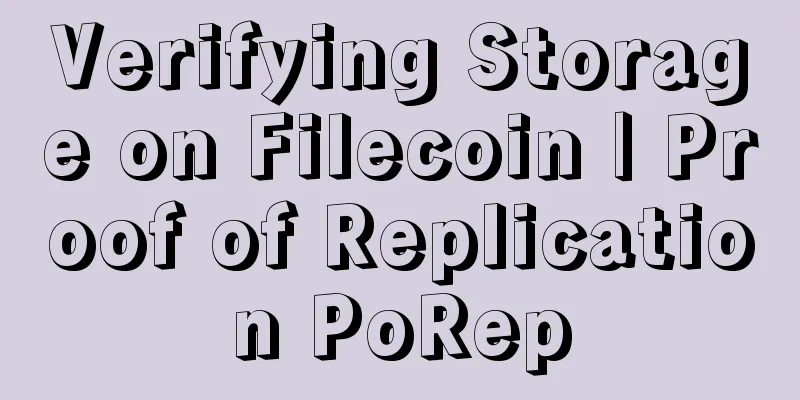Verifying Storage on Filecoin | Proof of Replication PoRep

In the previous article, we discussed in detail the preparation and transmission of data, mainly introducing two aspects: preparing data for storage, negotiating storage transactions and transmitting data. This article will discuss the question "When to run proof of replication?"In Proof of Replication , storage miners prove that they are storing a physically unique copy or replicas of the data. Proof of Replication happens only once, when the miner first stores the data. When storage miners receive each piece of customer data, they put it into a sector. Sector is the basic unit of storage in Filecoin and can contain fragments from multiple transactions and customers. When a sector is filled, a CommD (data commit, also known as UnsealedSectorCID) is generated, representing the root node of all CIDs in the sector. Next, a process called sealing occurs. During sealing, the sector data (identified by CommD) is encoded through a series of graphing and hashing to create a unique copy. The root hash of the Merkle tree of the resulting copy is CommRLast. (Learn more about merkle trees in our Decentralized Data Structures tutorial.) CommRLast is then hashed together with CommC (another merkle root output from the Proof of Replication). This generates CommR (Commitment of Replication, also known as SealedSectorCID), which is recorded to the public blockchain. CommRLast is kept privately by miners for future use in Proof of Spacetime, but is not saved to the chain. The encoding process is designed to be slow and computationally heavy, so it is difficult to cheat. (Note that encoding is not the same as encryption. If you want to store private data, you must encrypt it before adding it to the Filecoin network.) CommR provides the proof we need that a miner is storing a physically unique copy of a customer’s data. If you store the same data with multiple storage miners, or make multiple storage deals for the same data with one miner, each deal will have a different CommR. The sealing process also compresses the proof of replication using zk-SNARKs to keep the chain small so that all members of the Filecoin network can store the chain for verification. We will learn more about zk-SNARKs in future courses. ——End—— |
>>: Will IPFS storage be stopped by the government? Content risks may be borne by miners
Recommend
Where are the places with the best luck?
Everyone hopes that there will be a noble person ...
Are people with small noses more likely to get rich?
Many times, it seems that someone has said that t...
The legend of a person with a birthmark on his arm, what is his fate?
The location of the birthmark is actually uncerta...
Türkiye's Currency Plummets 5% in Less Than 24 Hours, Here's Bitcoin's Opportunity!
The dire situation in Turkey has brought a greate...
Talk about the Bitcoin idea in "The Three-Body Problem"
Chapter 0 Introduction Congratulations to Liu Cix...
Investors are avoiding risks, bullish momentum is insufficient, and Bitcoin leverage is hovering at a low level
After breaking through $48,000 earlier this week,...
Why Bitcoin Hit All-Time Highs in Türkiye, Egypt, Nigeria, and Argentina
Bitcoin has performed strongly recently, once aga...
The face that is unmoved by Double 12
Having avoided Double Eleven, it is likely that m...
Mole on the arm
Everyone has moles on their bodies, and moles are...
Analysis of men's face: men's face that is destined to be rich in life
How does a man’s face tell him about his wealth a...
What does a mole on a woman’s chin mean? Can a mole on the chin be removed?
Moles on a woman's face will affect her appea...
How to read and interpret the jade pillar pattern diagram
Palmistry is a relatively important part of fortu...
Analysis of women's lips
As one of the traditional physiognomy techniques, ...
Announcement | Qitmeer Network Pmeer will be listed on HotBit Exchange soon
Qitmeer Network has reached a cooperation with Ho...
90% of Bitcoin computing power is concentrated in less than 20 companies
According to Bitcoinist, more than 90% of Bitcoin...









